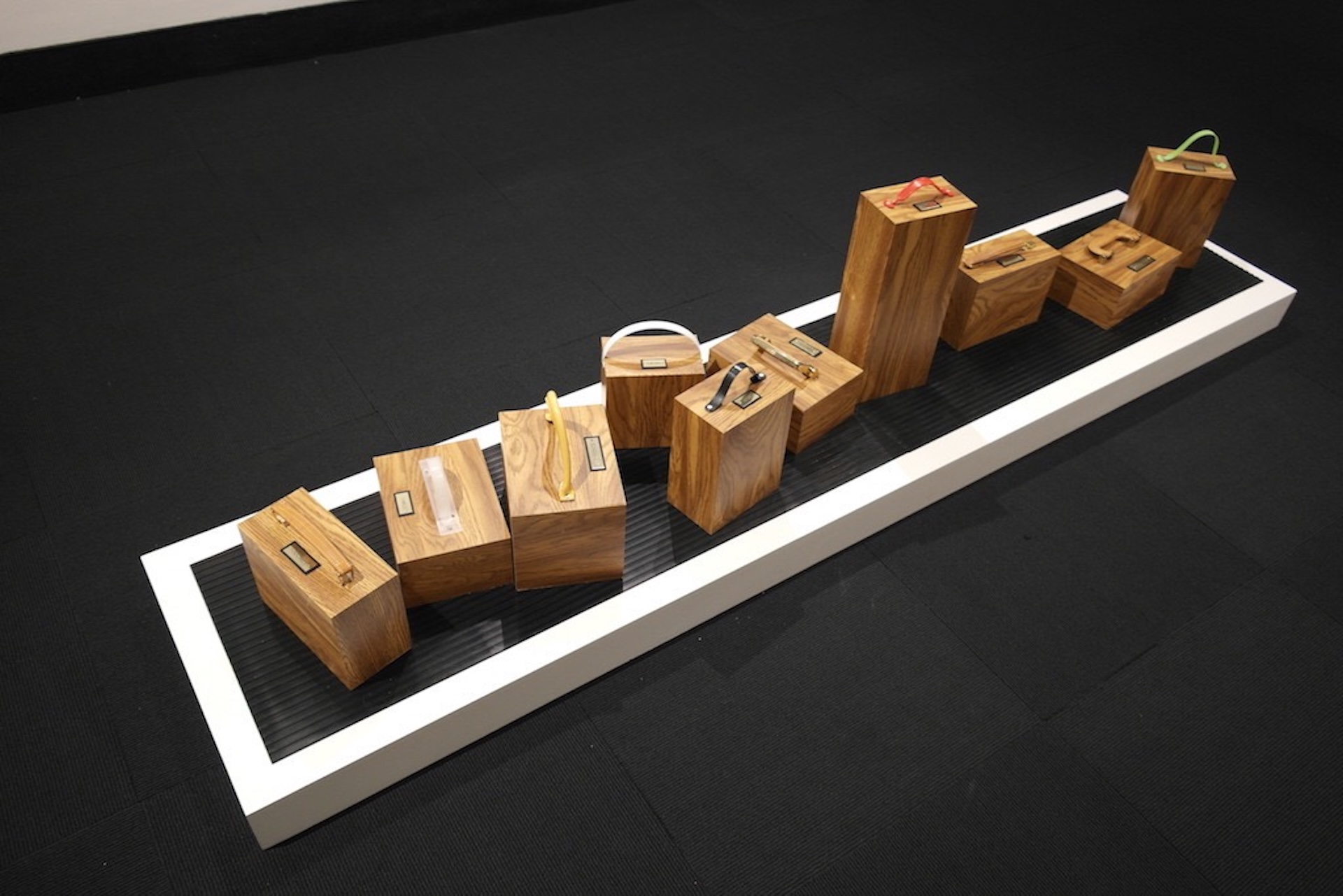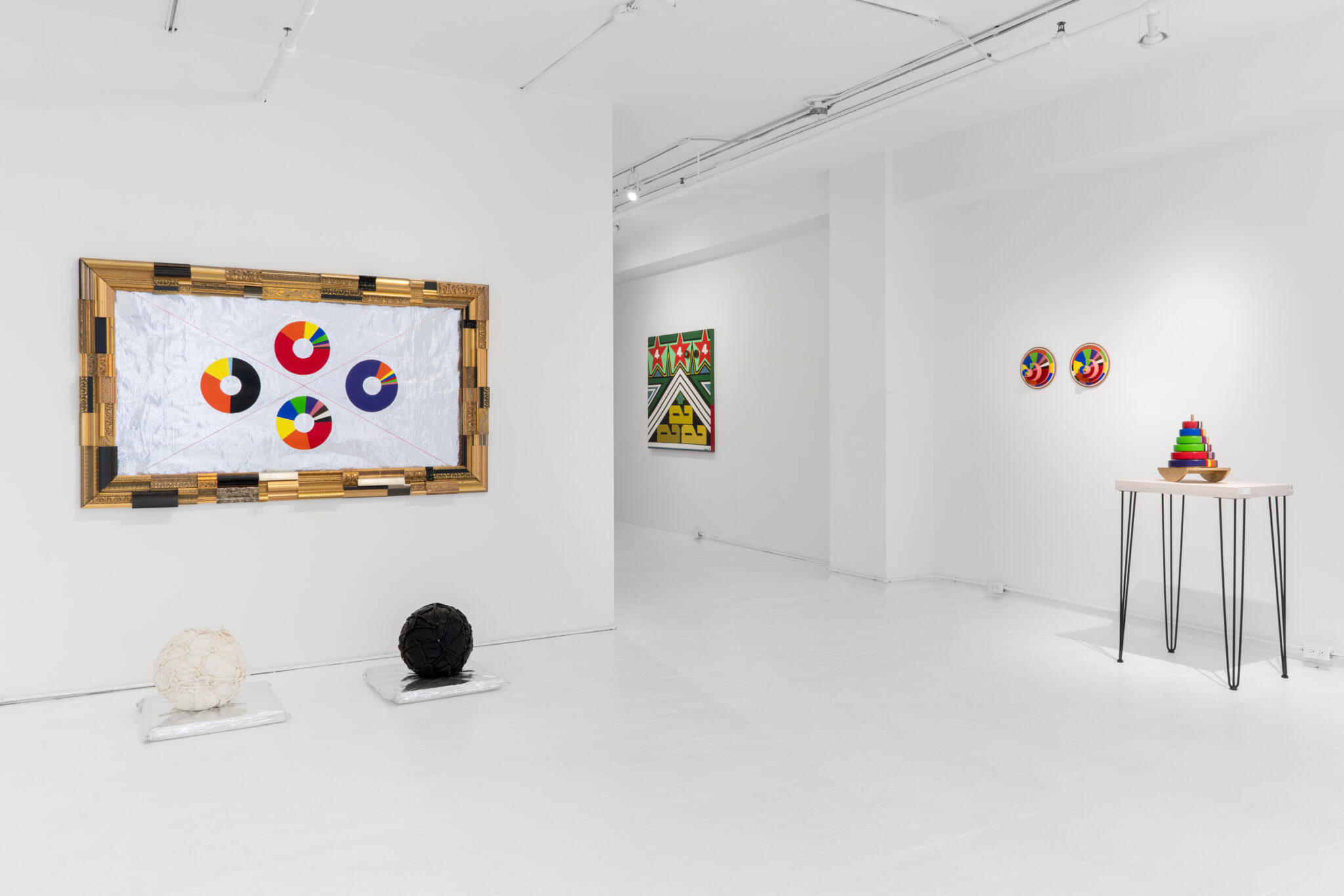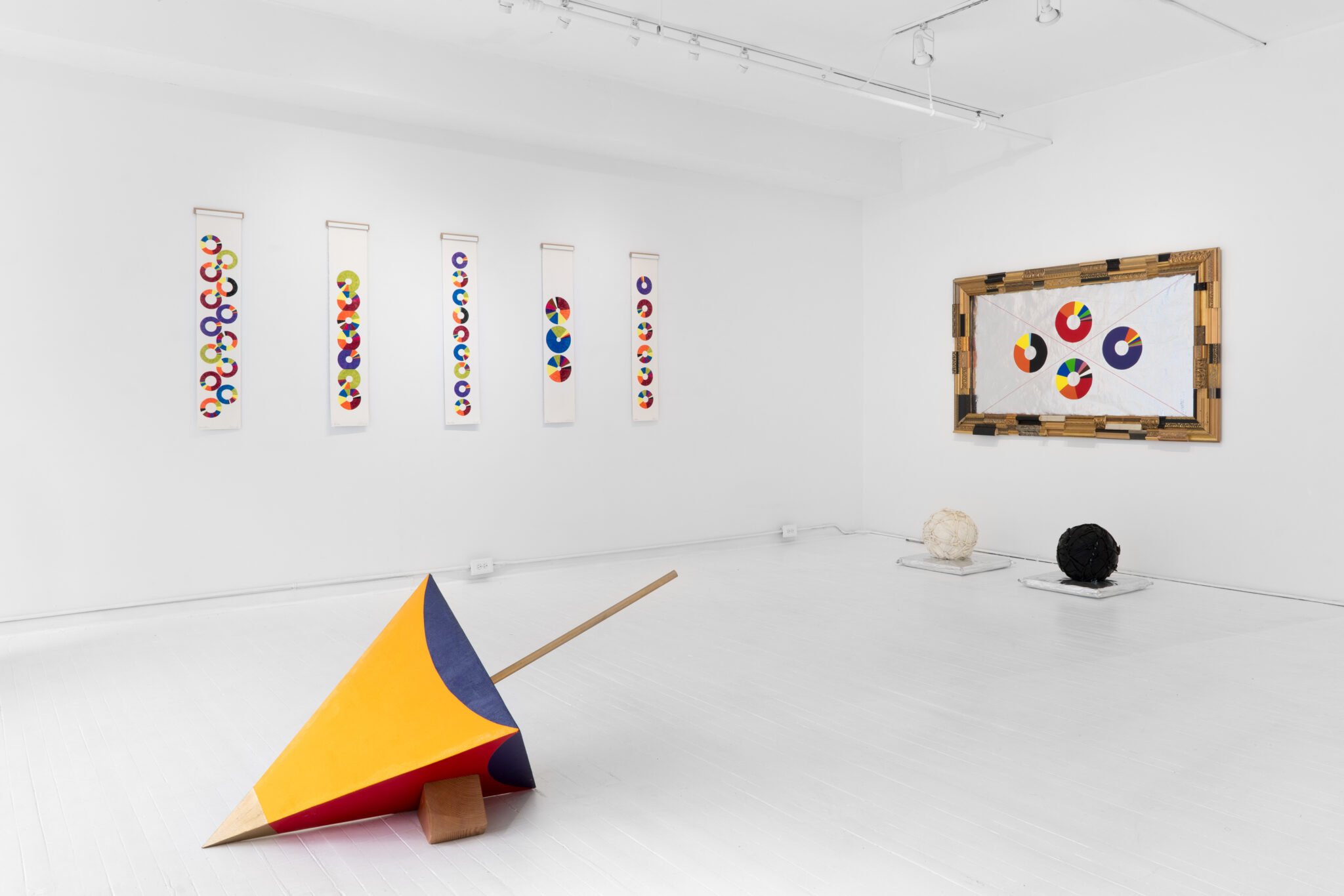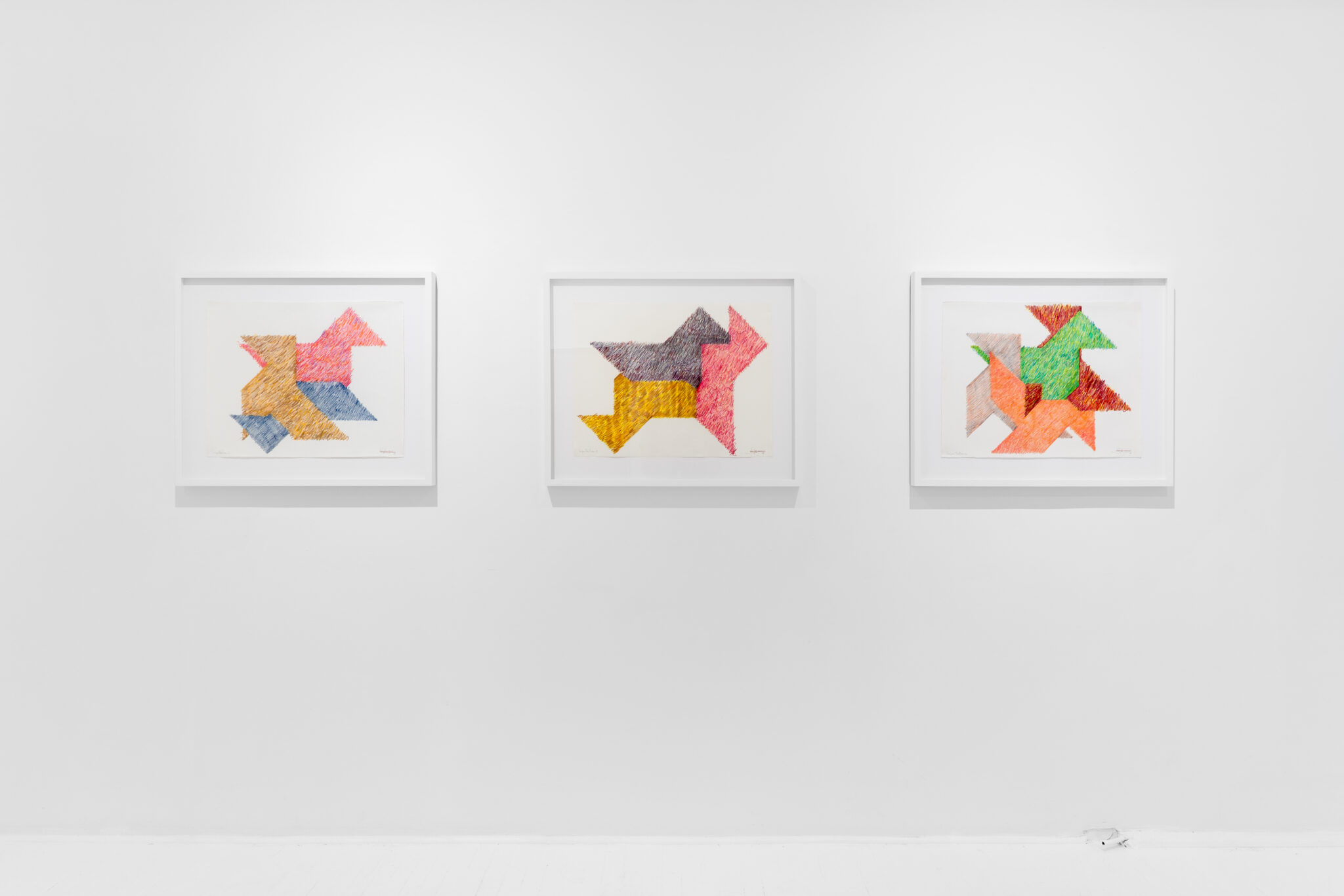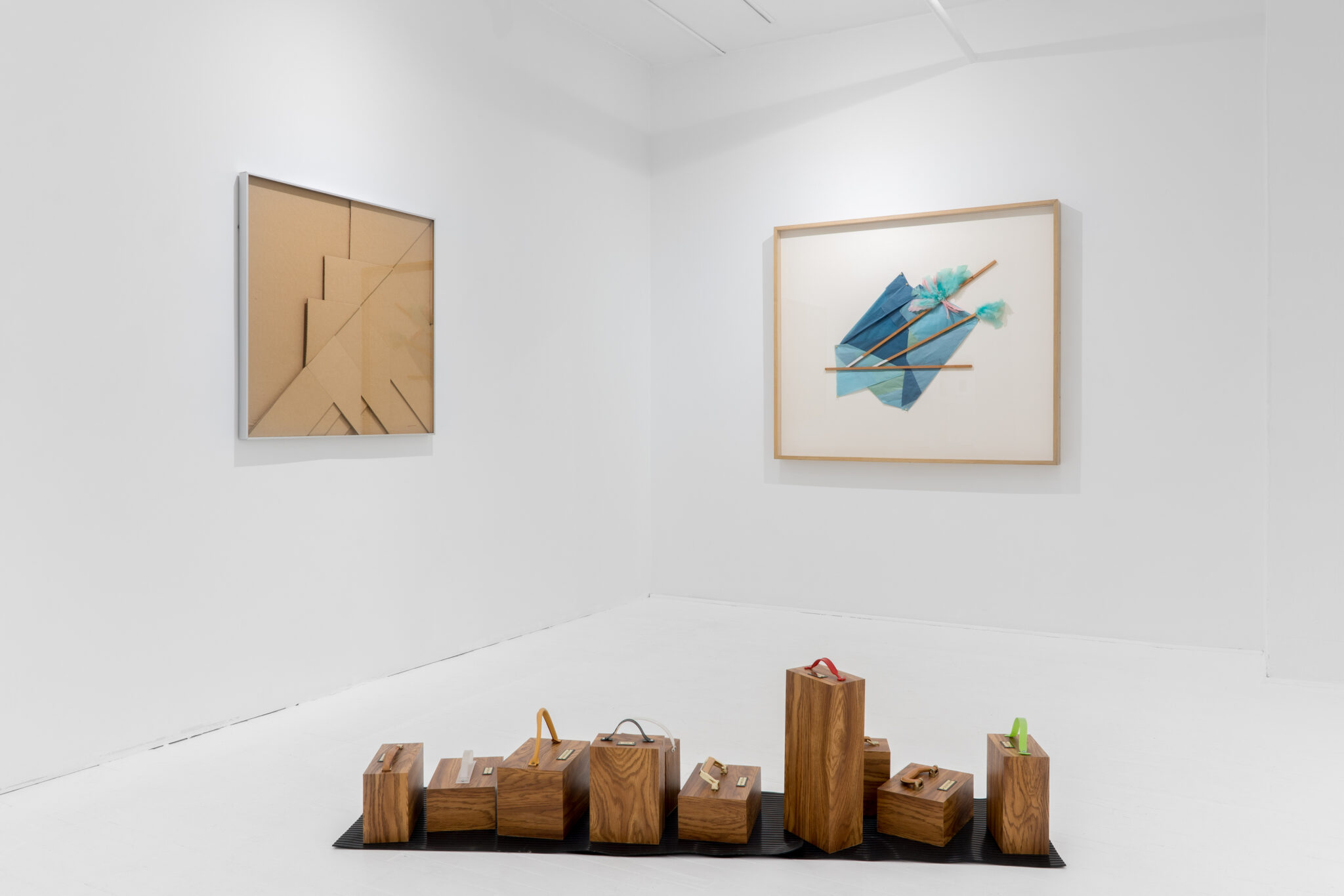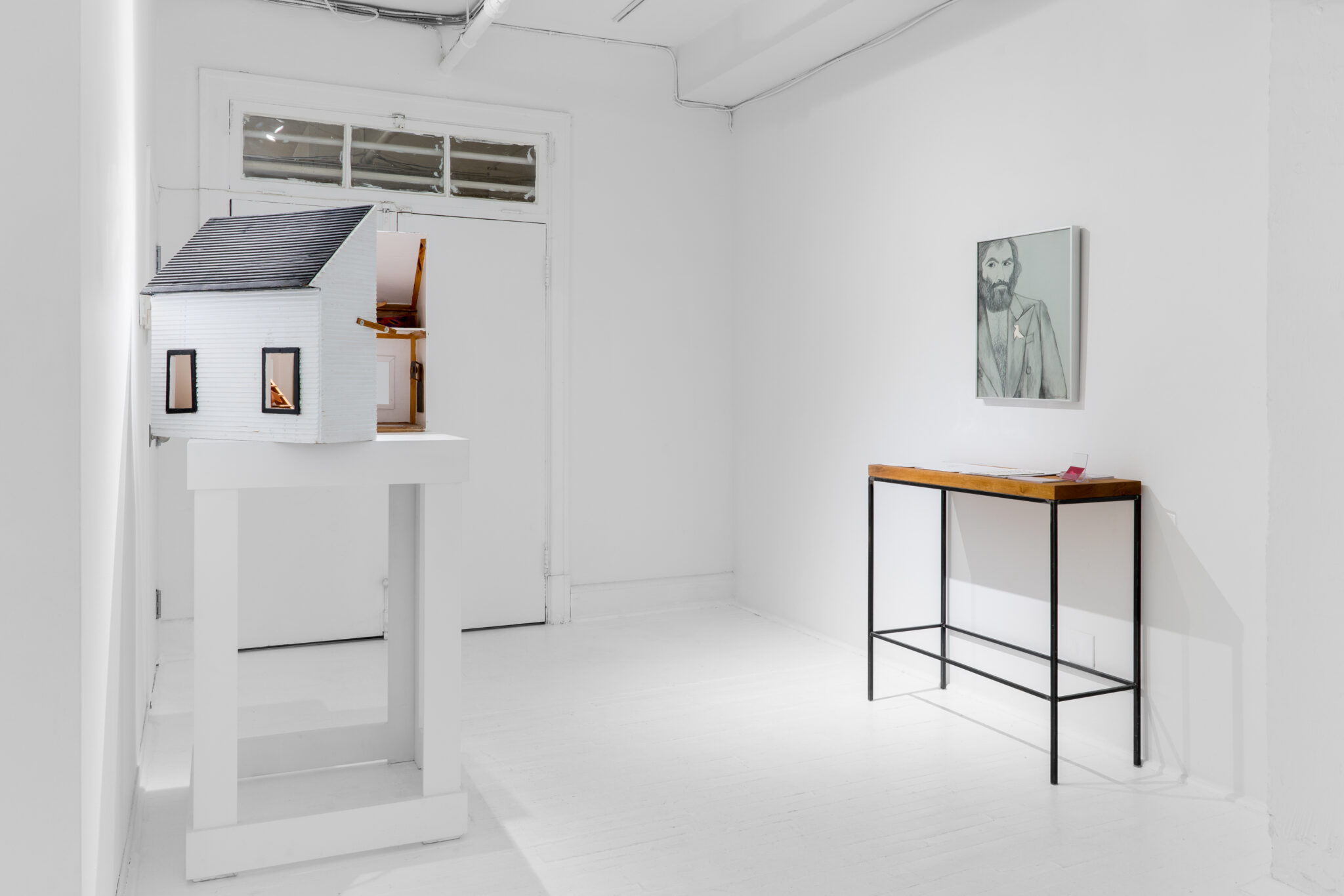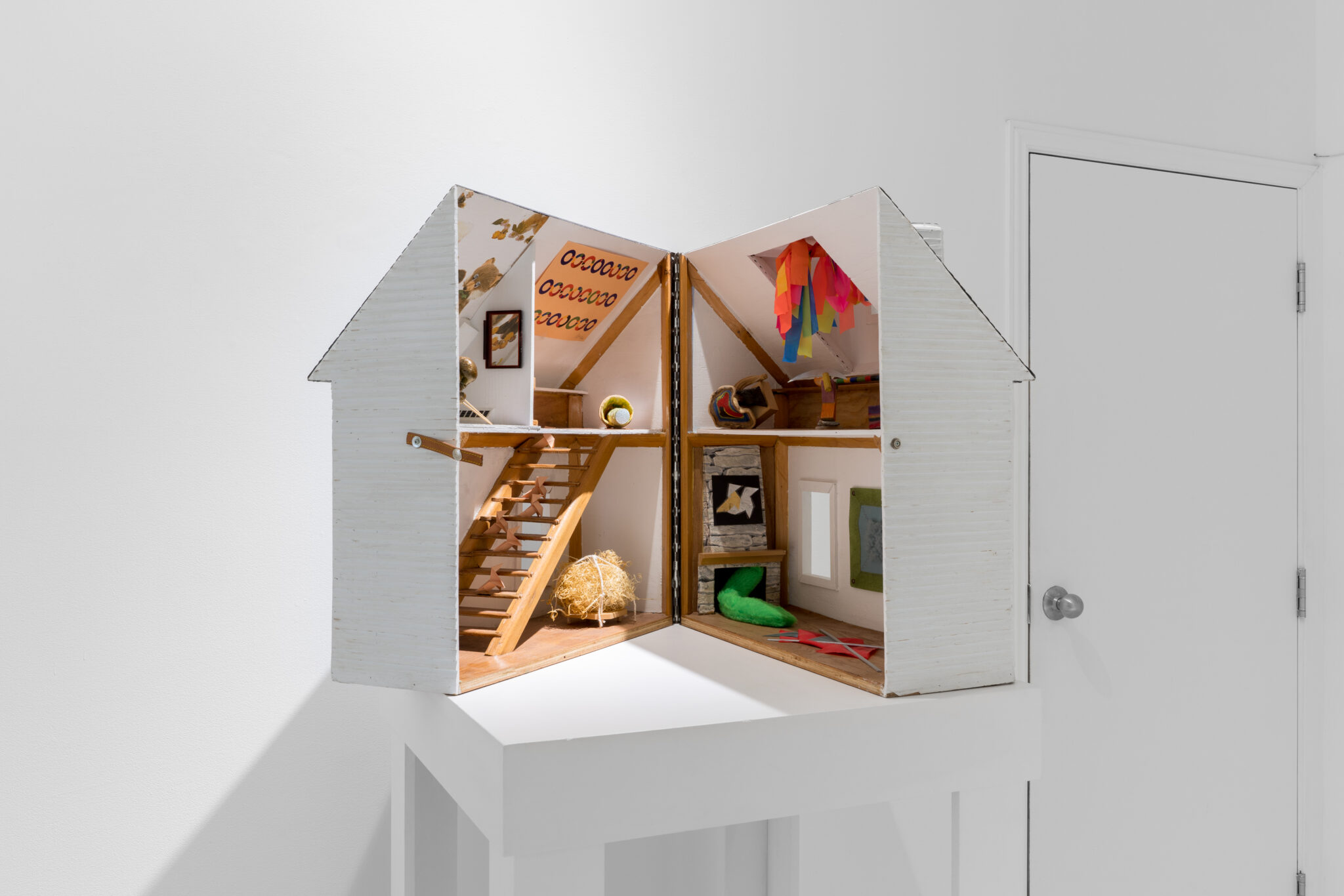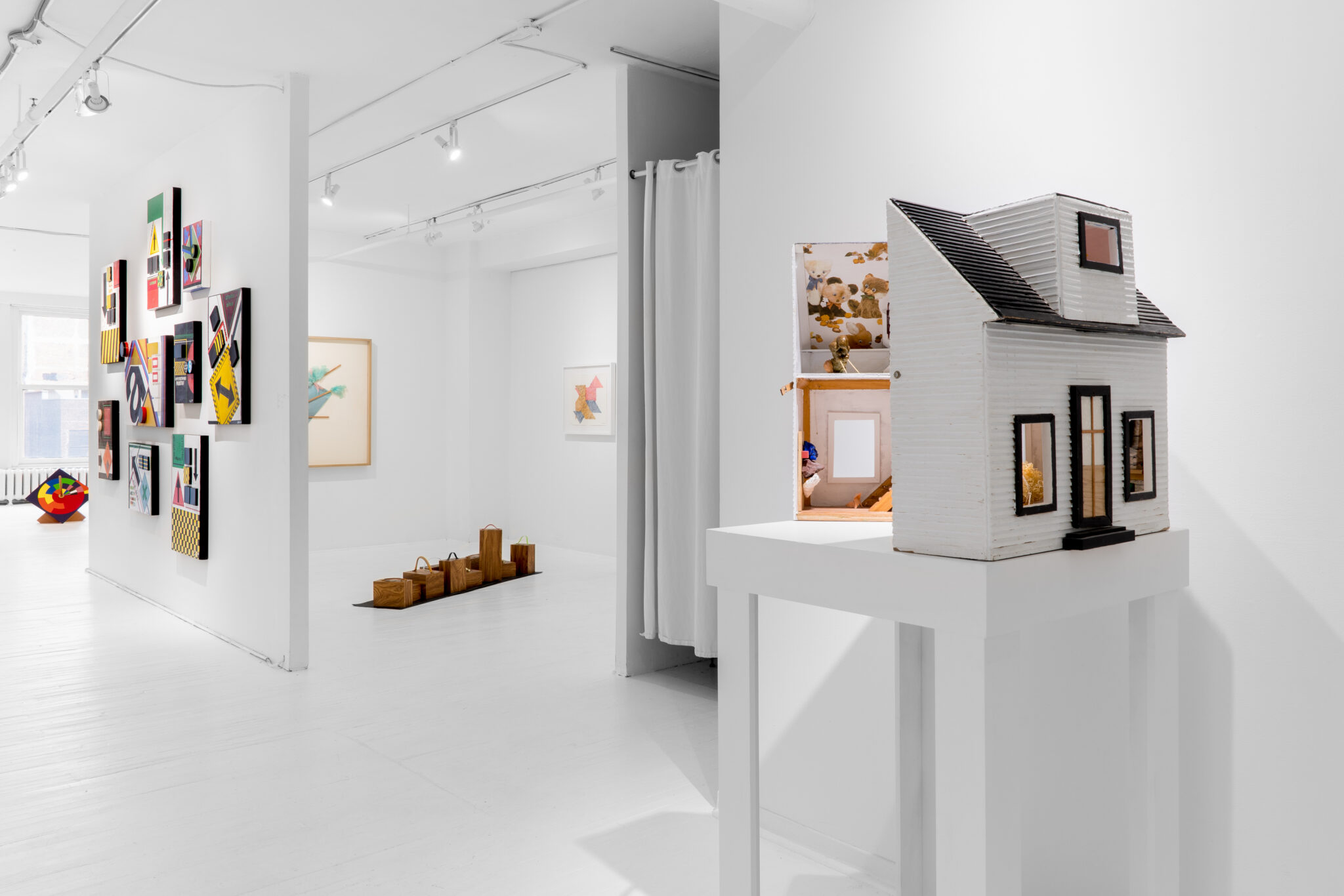Presented only a few months after the passing of Yvon Cozic, on June 27, Un étonnant voyage, la suite takes place in a deeply moving context. The loss of this major artist represents an immeasurable loss for Quebec art, which he helped to anchor in modernity. We dedicate this exhibition to his memory (1942–2025). Our thoughts are with Monic, his lifelong companion, as well as their daughter, Nadja.
The exhibition title refers to an installation by Cozic created in 2015. With disarming efficiency, the work condenses the essence of existence, crystallized in an evocative metaphor. Yvon Cozic’s recent departure amplifies its symbolic and emotional resonance.
Conceived from salvaged industrial materials, the installation is composed of ten suitcases of varying sizes, arranged on a base covered with a carpet evoking an airport carousel. Each one bears a plaque engraved with a distinct word, alluding to the universal feelings that mark the course of life.
Through this installation, Cozic addresses fundamental existential questions: the passage of time, the ephemeral, fragile, and transient nature of life, the complexity of human relationships, transmission, disappearance, and traces left behind. The suitcases stand as allegories of intimate baggage, the burden each person carries, heavier or lighter depending on one’s experience, while the allusion to the airport—an archetypal transitory place—figures the human condition, paced by cycles, punctuated by arrivals and departures.
This exhibition celebrates the remarkable trajectory of Cozic, a visionary artist duo united in both life and creation. Pop, playful, inclusive, and free, their practice resists categorization and, as Bernard Lamarche, Curator of Contemporary Art at the Musée national des beaux-arts du Québec, recently recalled, the duo sought above all “to abolish the divisions that could arise between art and the public […] in a word, to reduce this distance through an art of participation”.
Although not a retrospective, the exhibition brings together works spanning nearly six decades of creation, some emblematic, others rarely shown. This selection offers an overview of the duo’s journey and highlights recurring themes in their work such as communication, ecology, and play.
Early Creations and the Crown Code
From its inception in 1967, Cozic playfully and conceptually explored the language and configuration of words. The duo took an interest in systems of signs—verbal, visual, or graphic—that they subverted with humor and inventiveness, whether through wordplay or conceptual experiments using Braille, maritime, or lip-reading codes.
Created in 1966, a year before the duo officially adopted the name Cozic, A-Anathème and Halt— which the artists describe as painting-reliefs—draw inspiration, in a resolutely Pop aesthetic, from the graphic symbols of road and commercial signage. They reveal the couple’s early fascination with signs, symbols, elements of language, and everyday objects. Among the oldest and least-known works by the duo, they had not been shown since 1971.
Cozic’s research around language culminated in 2006 with the invention of the Crown Code, a chromatic and synesthetic visual language that questions both the status of the artwork and the mechanisms of meaning. The idea for this code came to them in a waiting room, while leafing through a magazine detailing mining stock market indices. The colorful diagrams inspired a chromatic code: a secret plastic alphabet composed of nine colors, organized into concentric circles and arcs.
According to art historian Gilles Lapointe, the Crown Code is “the Cozic signature”: a fundamental, emblematic, and immediately recognizable element of their aesthetic.
In the work Seins (2011), Cozic used the rounded form of the Crown Code to evoke the female breast, referencing the long tradition of the nude in Western art.
The circular quality of the code reached its peak with Boule E (2007), where it unfolded in three dimensions within a sphere, in its full volumetric power.
Closely linking art and play, Cozic encouraged the participation of the viewer, invited to decode the Crown Codes integrated into the works using a decoder. Boule E, Dieu, and Rythme, shaped like familiar children’s toys (a ball, a hybrid target combining darts, archery, and a spinning top, as well as a stacking game) embody this playful and participatory dimension of their practice. Like playful riddles, the titles of the works are transposed into the Crown Code and embedded within the objects themselves.
The Dazibao series was inspired by Japanese kakemonos and Chinese dazibaos: popular manifestos written by citizens and posted on walls to address political or moral issues. It gathers eight drawings that unfold, in Crown Code, words such as “ravings,” “poetry”, “rigor”, “abstract”, “encounter”, “real”, “legible”, and others, repeated like mantras.
Krakos Angleterre (1969), part of the Krakos series, marks one of Cozic’s first forays into sculptural abstraction and is today one of the few remaining pieces from this ensemble. As early as 1967, the duo contributed to introducing post-minimalist aesthetics in Québec. The work shows affinities with that of American sculptor Robert Morris, who had developed a reflection on space, architecture, and the viewer as fundamental components of the work and of the aesthetic experience—research that would later inspire Cozic and their production based on the sensory involvement of the public.
Composed of two distinct elements that can be configured in different ways, this dual form, made from industrial materials, lends itself to manipulation. The viewer is naturally inclined to recompose the circular figure. The work thus foreshadows Cozic’s later creations, where active and sensory participation of the public occupies a central place.
Foldings
In 1978, Cozic turned to the practice of folding, introducing their famous “cocottes”, which would become a central and obsessive motif of their production in the 1980s. Each fold, by reducing the surface, negates the geometric purity of the square. For over a decade, Cozic’s cocottes—often personified—were produced in a variety of formats and materials such as paper, fabric, steel, wood, and cardboard.
Created in 1983, Aztèque no. 11 belongs to an eponymous series in which Cozic imagined a fictitious archaeology. Shaped from modest and familiar materials, the foldings resemble Aztec relics, evoking an imperial headdress.
Combining formal rigor with creative freedom, Cozic nurtured imagination, play, and wonder in everyday life. The duo’s creative process was fueled by the unexpected, chance encounters, and formal obsessions that demanded resolution.
